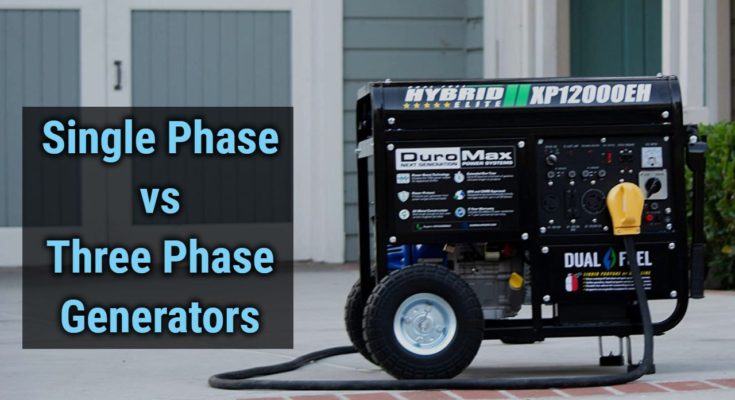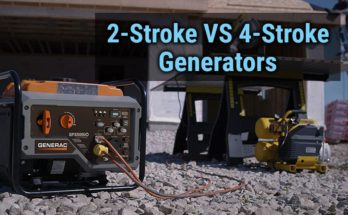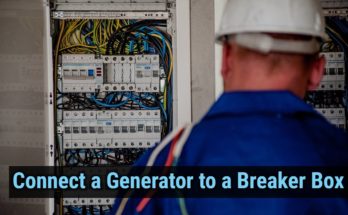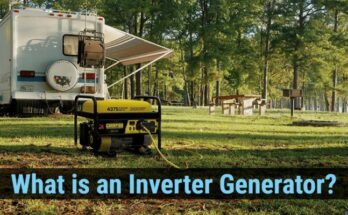A generator is no doubt an essential for the house when the power goes out. But, when it comes to buying one, then these generators can be classified based on different types. If you don’t know anything about generators, then all these terms will confuse you.
One of the classifications of generators is based on their power supply system. They can either supply power as a single-phase or as a 3-phase system. They are very different from each other, and in this article, we have illustrated the key differences between them and also covered their applications.
Table of Contents
Single-phase Generators

Single-phase generators are those that generate only one alternating voltage. The voltage will be in the sine waveform, it changes its magnitude continuously, but the frequency stays constant.
To transfer the power, it only needs 2 wires, one of them the conductor through which the current will flow to the appliances, and the other one referred to as neutral, which acts as a return path for the current. These two wires will close the circuit. They are generally used to power small appliances.
The power a single-phase generator supplies is not constant, there will be dips in power, so they are not good to supply the appliances with the continuous power needs.
Three-phase Generators
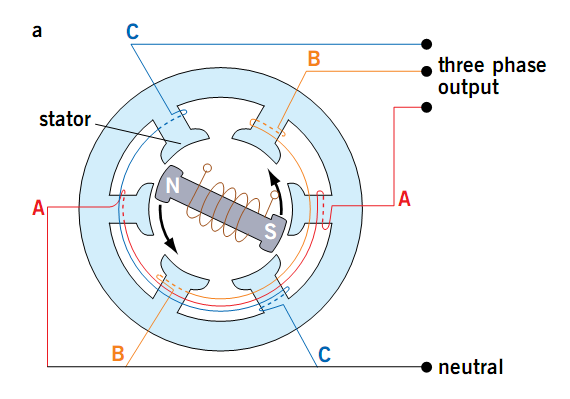
As compared to single-phase generators, the three-phase generators use 4 wire systems to distribute the power to the appliances. The three of them are conductors, and one is a neutral wire.
Three wires are to distribute 3 different voltages, which are out of phase with each other by 120°, but their frequency and magnitude are the same. If we consider the power from the single-phase generator, then it becomes zero at every half cycle of the voltage, whereas the power supplied by the 3-phase generators will never be zero during the whole cycle of voltage. The power supplied by them is constant.
3-phase generators are bigger in size due to the many wires inside. Surprisingly you can use the 3-phase generators as a single-phase generator by only using a single conductor and the neutral.
Differences between Single-phase and Three-phase Generators
Appliances
A single-phase generator has only one phase, this means all the power will be available on that phase only, and also the power generated will be less.
They are meant to power small appliances in a home. If you want to power a small motor or a heater or lights, then single-phase generators are great. But, to power the whole house, you might need a 3-phase generator.
A 3-phase generator is a power hub, it generates a large quantity of power, and that’s why it is mainly used for industrial and commercial power needs. They are used as standby backups for emergencies as they can supply the power much easier. Here you can’t use a single-phase generator.
They can’t power more than a certain amount of power, if any appliances try to draw much power, then the wires will burn out, but most of the generators will shut off, thanks to its overload protection.
For a 3-phase generator, an appliance should not draw more than 1\3rd of the total power, and if that happens, then there will be some serious damage. So, be mindful when attaching the loads.
Conductors
The one obvious difference you should be aware of by now is the number of conductors. A Single-phase generator uses two conductors, while a 3-phase generator has four conductors to supply the power. The neutral is the same in both of them and is essential to complete the circuit to ensure the power flow.
Also, due to the number of conductors, a small generator can generate up to 240 V, while a 3-phase generator can generate the voltage up to 415 V.
Maintenance
You should choose a generator which doesn’t give you a hard time in maintenance. A single conductor of an only phase of a single-phase generator fails, then the whole generator is down. While a 3-phase generator has 3 conductors, if one goes out, then the other 2 can mount the load on themselves.
A single-phase and 3-phase generators are not much different from each other in terms of components used, they both have almost the same components, so there is no significant difference when it comes to their maintenance.
Conclusion
As mentioned, single-phase generators are most suitable to power small appliances like lights, small motors, and other less power-consuming appliances of your house.
These are small and very good for low power requirements. If your power demands aren’t high and you don’t need power more frequently, then the single-phase generator is for you.
But, if your power requirement is more, like if you want to power the whole house, then the 3-phase generator is a good choice. They supply large power continuously to run power-consuming appliances.
They are most suitable in commercial and industrial settings where power needs are more. They will provide continuous power without any dips, and they are reliable generators.
The choice will depend on your particular application. They both are best for different applications.
Propane Vs Gas Generator: Which one is Better?
What is a Dual-Fuel Generator and How Does it Work?
Paralleling Generators – How does it work? | Everything you need to know

